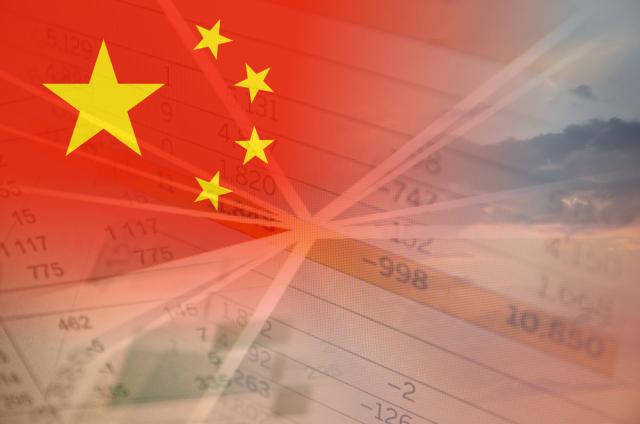
Even at moderate economic growth, China’s reopening is likely to take oil prices higher, though its GDP will likely have less of an impact on LNG. (Source: Shutterstock)
How China’s economy responds following the end of its three-year, draconian zero-COVID protocols will have a global impact on energy and natural resources, according to a new Wood Mackenzie.
But even at moderate economic growth, China’s reopening is likely to take oil prices higher, though its GDP will likely have less of an impact on LNG.
RELATED: Asia Seeking Reliable Gas from US, Australia, Qatar and Beyond
If the Chinese economy takes off, it would “reshape short-term commodities supply and prices dramatically,” Massimo Di Odoardo, vice president of gas and LNG research for Wood Mackenzie, said on a call with reporters.
The question is how aggressively China’s economy will snap back.
“For almost three years, the country locked down its entire population to fight the virus, seemingly regardless of cost or consequence,” according to Wood Mackenzie’s “The Great Reopening” report. Chinese oil consumption flagged in 2022, while LNG imports slumped 20% year-over-year.
Then, in January, China abandoned its quarantine measures and reopened its boards.
RELATED: China's COVID Pivot Boost Oil, Gas, LNG Demand
During the People’s Congress in March, the Chinese Communist Party set a 2023 growth target of 5%. Wood Mackenzie puts that number slightly below their base-case scenario of 5.5%. Di Odoardo noted that China’s GDP growth has historically outpaced the country’s growth targets.
Wood Mackenzie sees China’s economy growing between 5.5% and 7% in 2023.
Outpacing the government growth target from 5% to 5.5% is not a concern for prices in the near term. But a hot Chinese economy — the hyper-growth, 7% scenario — would have China’s GDP pointing to global GDP growth.
“A hotter China lifts the global economy with gross domestic product growing by 2.6% in 2023 versus 2.2% in our base case,” said Peter Martin, Wood Mackenzie’s director of macroeconomics.
Impact on oil prices
Oil prices should stay firm on the back of either scenario. While a short-term reshaping could occur, that does not mean prices will soar for the year.
In WoodMac’s base case, a strong recovery in global oil demand in 2023 will drive a tightening of the global supply and demand balance, pushing prices higher.
“A return to normal mobility in China is the single biggest demand driver,” according to the report.
Barring a significant recession, Brent will rise from current levels to an average US$89.40/bbl for 2023.
“China being on the move again after the zero COVID policy of 2022 will account for 1 million bbl/d of the 2.6 MMbbl/d gain we expect in oil demand this year,” said Ann-Louise Hittle, the firm’s vice president for oil markets.
If China hits the higher end of Wood Mackenzie’s GDP forecast, it could cause demand growth to rise to 1.4 MMbbl/d by the end of 2023 — spiking oil prices up to an average $94/bbl.
Natural gas ‘chaos’ not expected
In 2022, Chinese natural gas consumption fell by 2% and LNG imports fell by an astonishing 16 metric tons (mt), Wood Mackenzie said in its report.
While Wood Mackenzie expects Chinese demand to begin rebounding, prices are likely to be more stable compared to 2022.
In part, China’s need for LNG was replaced by domestic gas production and faster-than-anticipated Russian supplies.
Even in a scenario in which stronger Chinese LNG demand rears up, prices aren’t likely to repeat the 2021 to 2022 heating season. Average spot LNG prices in Asia climbed to four times their five-year average, according to the International Energy Agency.
But the high-growth GDP case for China will drive up competition for supply at a time when no new projects are expected to be commissioned before 2025, Wood Mackenzie said. Prices will inevitably increase, although moderating demand elsewhere will limit price upside to US$25/MMBtu.
“[The] global gas market is not out of the woods; it is a structurally tight market and prices are volatile,” according to Di Odoardo. “But with demand trimmed by high prices, recent mild weather and markets proving resilient in a world without Russian pipeline exports to Europe, stronger-than-expected Chinese LNG demand is unlikely to lead to a repeat of the chaos seen in 2022.”
As Chinese imports fell in 2022, European imports picked up the excess on the market. Even if China’s imports rebound, Wood Mackenzie does not expect them to reach 2021 levels — allowing the market more time to balance the increased demand from China and Europe.
Chinese gas demand appears to be rebounding. WoodMac’s report expects 9% demand growth, supported by stronger GDP growth and lower prices. However, less LNG may be needed.
China’s domestic production is booming, up 15 Bcm and Russian pipeline imports are up 7 Bcm. That will constrain LNG imports to 97 Bcm in 2023, WoodMac said in its report.
For LNG, “this is just 7.4 mt (10 Bcm) more than in 2022, and still far lower than the 80 mt imported in 2021,” the report said.
Even in the firm’s high-growth case for China, LNG demand only reaches 78 mt in 2023, still short of LNG imports in 2021.
Coal is another story. Chinese coal imports fell by 38 mt in 2022, a 16% decline from 2021.
In WoodMac’s base case, China’s coal demand rises 4%. In the high-growth scenario, coal increases to 158 mt, setting the stage for a potentially record-breaking year for global coal demand.
Why prices will rebalance
While prices may go up, Wood Mackenzie does not expect them to break or even approach previous records.
In 2022, Russia’s invasion of Ukraine created uncertainty, disruptions and supply chain issues that helped exacerbate instability in a fragile global market.
The market had to determine how best to navigate this instability and is now in a better place to handle the projected growth from China.
What producers will have to monitor is “just how strongly demand from China will be coming back against the backdrop of weakening western economies,” according to Mackenzie’s report.
Recommended Reading
Help Wanted (Badly): Attracting Workers to Energy is Becoming Difficult
2024-03-27 - Attracting workers to the energy industry is becoming a difficult job, despite forecasted growth in the industry.
E&P Highlights: March 4, 2024
2024-03-04 - Here’s a roundup of the latest E&P headlines, including a reserves update and new contract awards.
NAPE: Turning Orphan Wells From a Hot Mess Into a Hot Opportunity
2024-02-09 - Certain orphaned wells across the U.S. could be plugged to earn carbon credits.
Petrobras to Step Up Exploration with $7.5B in Capex, CEO Says
2024-03-26 - Petrobras CEO Jean Paul Prates said the company is considering exploration opportunities from the Equatorial margin of South America to West Africa.
Exxon Versus Chevron: The Fight for Hess’ 30% Guyana Interest
2024-03-04 - Chevron's plan to buy Hess Corp. and assume a 30% foothold in Guyana has been complicated by Exxon Mobil and CNOOC's claims that they have the right of first refusal for the interest.





